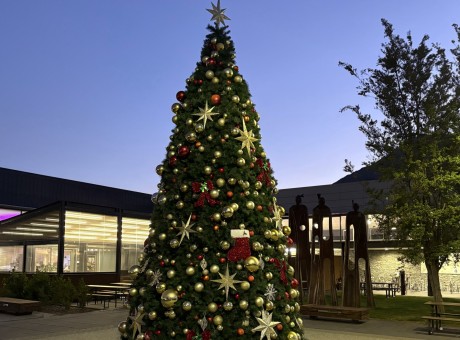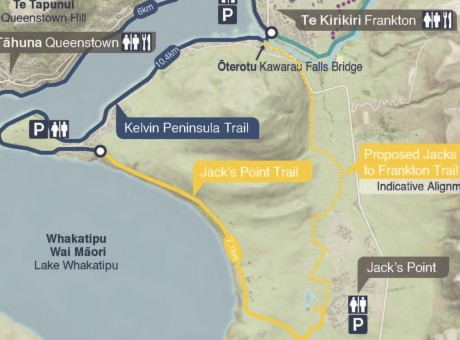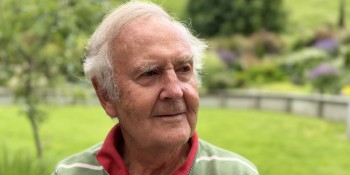Project Manawa - QLDC's new HQ taking next steps with costs unknown
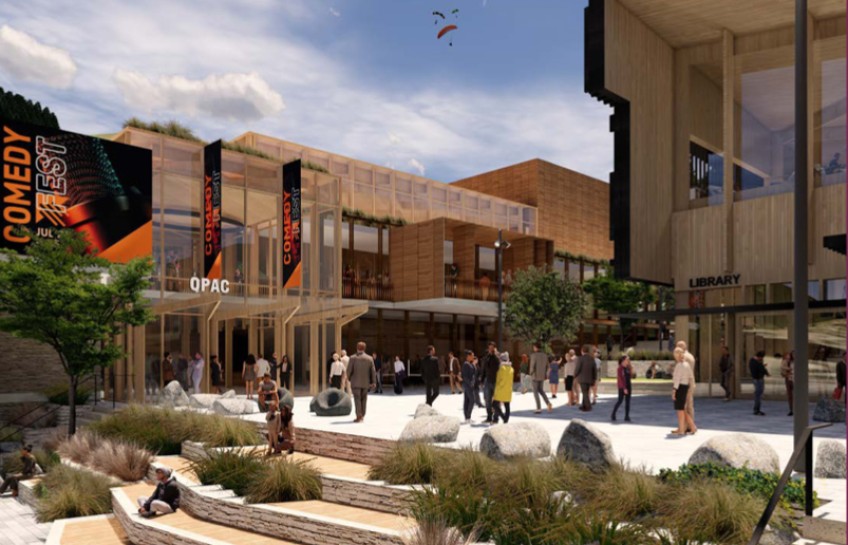
Queenstown councillors are tomorrow being asked to start to lay the financial and procedural foundations for a massive new QLDC headquarters - with an unknown end price tag likely to run into the hundreds of millions of dollars.
Also proposed for the Stanley Street site, a purpose-built library, a performing and visual arts centre, a town square, commercial buildings, and a transport hub, as part of ‘Project Manawa’.
In front of elected members at tomorrow’s full council meeting is a motion to adopt a ‘Statement of Proposal’ for the project, for the purposes of commencing a Special Consultative Procedure in relation to it.
The proposal itself is a glossy 24-page document, with plenty of images of renders of spacious new buildings, clad in timber, with impressive outlooks to the lake, and outdoor spaces buzzing with people.
However, for now, decision makers need to ignore the pretty pictures, as what’s actually in front of them relates to two important pieces of the Project Manawa puzzle – land deals and business partnership arrangements.
The decisions are so important they require what’s called a Special Consultative Procedure – a formal process which enables the community to feed into such significant decisions and a local government requirement.
In 2019 QLDC kickstarted a relationship to deliver Project Manawa in partnership with Ngāi Tahu Property. Now, councillors are being asked to OK the next steps in this relationship, firming up how it will work into the future.
What’s on the table is joint ownership – a 50/50 split - with governance sorted through a Council Controlled Organisation structure.
In a report to councillors ahead of the decision, QLDC strategic projects manager Paul Speedy says Ngāi Tahi Property owns land adjacent to the site proposed for development.
In his latest report, Mr Speedy says the partnership with Ngāi Tahu will “unlock the full potential of the site”.
There are other land interests in and around the site too – some of it is freehold land owned by the council (The Bead Shop and Gilmore Lodge buildings among them, purchased in 2021 for almost $4 million), some of it is QLDC administered Crown reserve land, some of it is held by the Ministry of Education.
The reserve land, Ngāi Tahi has first right of refusal to, as a result of a treaty claims process.
Outlined in the proposal are some options to play swapsies with chunks of land, to enable the best configuration of buildings and use of space - complicating things, reserve land shouldn’t be used for council offices.

Manawa means 'heart' in te reo Māori and the council's vision is to reboot the CBD with this development at its centre.
One of the swaps is already in motion – the Ministry of Education plans that the Playcentre occupies will be handed over to council in exchange for the former secondary school site in Gorge Road years back (the Playcentre will find a new home at Queenstown Primary School).
Others are just proposals for now, including the blocking off of a section of Ballarat Street, turning it into reserve land able to be swapped for freehold land at the east of the site.
The completed puzzle will allow the council to build public use buildings on reserve land, and its offices and other commercial spaces on freehold.
Pretty pictures - but no detail on cost
The elephant in the room is funding. It’s no secret the QLDC is edging towards a debt ceiling, with vital infrastructure projects already being pushed out, while precious ratepayer dollars continue to be spent to deliver on promises already made to another development partner, a few blocks over at Lakeview.
Mr Speedy is the senior council executive running the Lakeview project, under the sole delegated power of council chief executive Mike Theelen.
In his latest report, he says much of the Project Manawa vision is “subject to available budget”, and only the council offices themselves, a library space equivalent to that already in existence at Gorge Road, and a proposed performing arts centre have any money attached to them in the most recent Ten Year Plan.
At the moment, there is $57.4 million budgeted in the 2021 to 2031 Ten Year Plan, up from $42.3 million in the 2018 to 2028 Ten Year Plan, despite the scope of the project not changing significantly in that time.
How much headroom there may be to grow the budget will be nutted out in the coming months as council staff work on spreadsheets for the 2024 to 2034 Ten Year Plan, to be considered by councillors for public consultation in March.
Mr Speedy says by going in with Ngāi Tahu Property, “a reputable and experienced property developer”, the council “has an opportunity to share development risk”.
But it also means the council will not solely own any future building its staff reside in, or the land it sits on, and will be forced to lease it back to use.
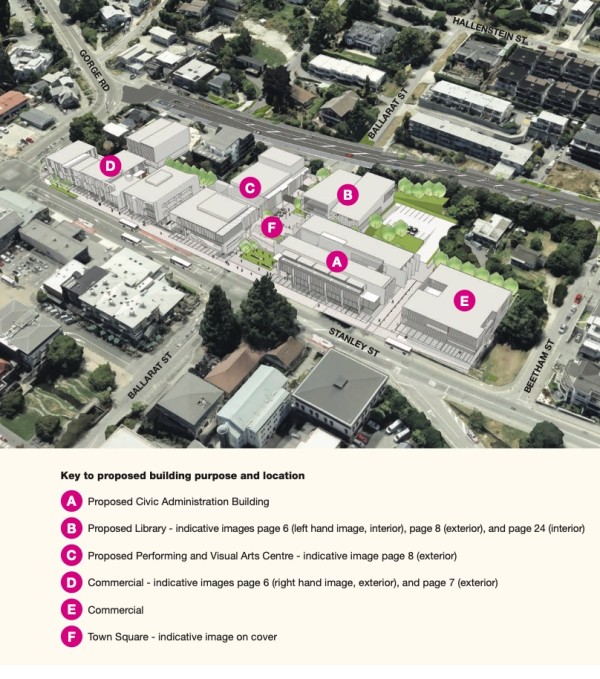
The end result of the council's preferred land swap deals (Image: QLDC).
The ongoing costs of renting the centrally-located, high-spec building imagined in the renders of the glossy documents being presented to councillors and the community are another unknown.
The vision of locking the new civic buildings into the increasingly choked up CBD stem back to 2018, and the endorsement of the Queenstown Town Centre Masterplan, following what the council calls “extensive community engagement”.
The council has not hidden the fact it sees efficiencies in bringing the bulk of its staff into one central building, when for now they are divvied up between a handful of offices, and relishes the chance to reboot and revitalise a CBD that has been haemorrhaging businesses and facilities to Frankton.
But this community mandate the council is banking on was delivered during consultation in 2017, pre-Covid, and now six years old.
Mayor: 'Approval to continue the conversation'
In a statement delivered to media this week, mayor Glyn Lewers says tomorrow councillors are only being asked for approval to continue the conversation.
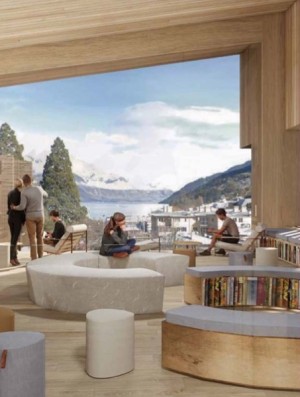
A purpose-built library is part of the vision, but there is no money in the budget for it yet (Image: QLDC document).
“It’s important for me to note, at this stage, the only decision on the table is to consider making options available for future councils to consolidate the land required for the Manawa development, and testing feedback on the use of the joint venture model to develop the future civic administration building through a new Council Controlled Organisation.
“Getting community feedback on these aspects will help shape the next steps and any decision to implement the project in the future will still require council decision making.”
But, despite his focus on small steps, it is clear from the statement the mayor, like his predecessor, is excited by the vision of Project Manawa: “This is a significant, long-term opportunity to take further steps towards creating a place that celebrates and connects our culture, heritage and community to showcase it to our domestic and international visitors".
The Statement of Proposal describes the options on the table, along with the advantages and disadvantages of each, and seeks submissions from the community to guide future decision making on the project.
If approved, consultation is expected to start in October.
Further decisions on the construction of proposed future facilities will come at a later date.
However, if a joint venture has already been entered into with a development partner, it is unclear exactly how much freedom next generation councillors will have to make their own decisions when that times comes.
The Stanley Street site was formerly home to the Queenstown Arts Centre building, which was removed from the council’s schedule of assets last year after public consultation.
As a result of feedback received during this process, the building is expected to be relocated towards the end of this year, to Country Lane in Frankton for community use.
Main image (QLDC documents): Project Manawa, if fully realised, could deliver a range of facilities on the large central Queenstown Stanley Street site, including community and arts spaces, a purpose-built library, a performing and visual arts centre, a town square, commercial buildings and improved opportunities for public transport, along with a civic administration building.





